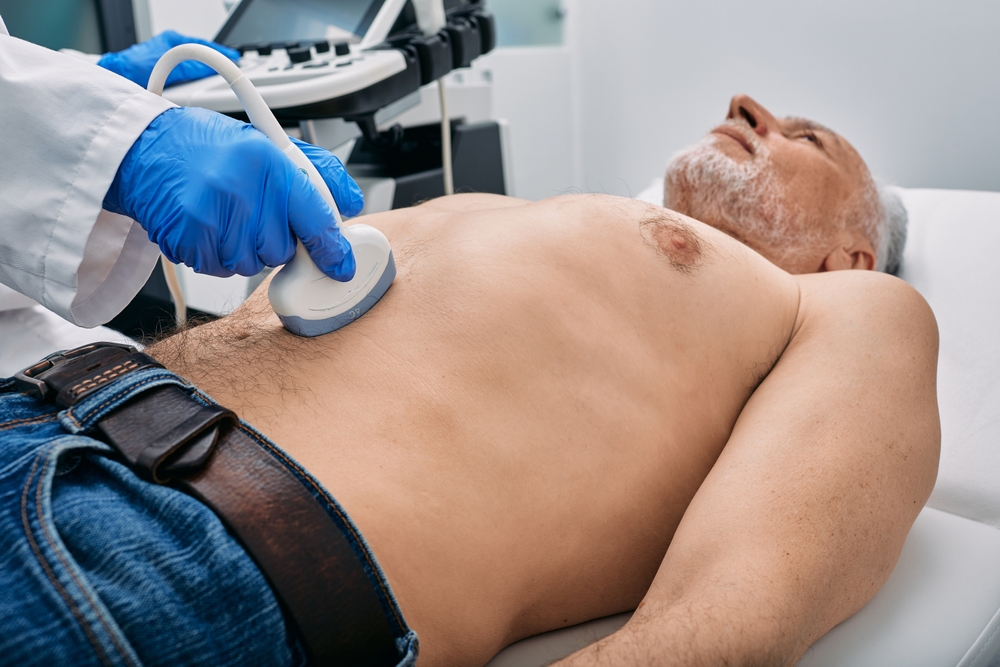Ultrasound’s Impact on Healthcare Risk Management
 Accurate diagnosis and timely treatment are critical to ensuring the best possible patient care. Misdiagnosis or delayed treatment can lead to serious consequences, including disease progression, complications, or even death. More and more, clinicians are turning to ultrasound to help illuminate the path to optimal outcomes.
Accurate diagnosis and timely treatment are critical to ensuring the best possible patient care. Misdiagnosis or delayed treatment can lead to serious consequences, including disease progression, complications, or even death. More and more, clinicians are turning to ultrasound to help illuminate the path to optimal outcomes.
Ultrasound helps mitigate risks by providing a noninvasive, accurate, and real-time view of health factors physicians can’t immediately assess through palpation or visual inspection. With ultrasound, providers can detect underlying conditions, diagnose diseases at an early stage, plan treatments, and generally minimize the opportunity for misdiagnosis.
Mitigating misdiagnosis with ultrasound
Mitigating misdiagnosis is a crucial aspect of healthcare risk management. This is particularly true in the field of internal medicine, where diagnosing conditions can be challenging due to ambiguous symptoms, overlapping presentations, and reliance on subjective assessments. Clinical judgment may not always provide a comprehensive understanding of a patient’s condition.
Ultrasound is a valuable tool for visualizing internal structures, organs, and tissues in real time, enabling physicians to identify abnormalities, evaluate organ function, and assess blood flow patterns. Through a detailed, dynamic view, ultrasound assists in uncovering hidden pathologies and aids in differentiating between similar clinical presentations to reduce the risk of misdiagnosis.
Additionally, ultrasound provides immediate results. This allows physicians to make timely decisions and initiate appropriate treatments promptly. This real-time aspect of ultrasound imaging is invaluable in minimizing the window for potential misdiagnosis and ensuring a faster path to optimal patient outcomes.

Ultrasound and early detection
Avoiding misdiagnosis is only one aspect of ultrasound’s growing role on the front lines of medicine. Ultrasound’s early detection capabilities also play a pivotal role in the successful treatment of various diseases and conditions. The sooner a disease or condition is properly diagnosed, the faster appropriate interventions can begin.
Speed-to-care is crucial in healthcare risk management, and few medical advances rival ultrasound’s ability to expedite care delivery across medical specialties. With ultrasound, physicians can detect early-stage tumors, evaluate organ function, assess blood flow, and identify changes in tissues or structures that may indicate the presence of an underlying condition. By capturing these early signs, ultrasound empowers healthcare professionals to initiate timely investigations, treatments, or referrals to specialists.
In many cases, early identification of diseases also allows for a broader range of treatment options. Access to more options sooner in the treatment process can deliver a more favorable prognosis for patients — and lower risk for providers treating them.
Ultrasound in treatment planning
Early detection and accurate diagnosis are precursors to yet another ultrasound risk management benefit: insight into treatment planning. Once a correct diagnosis is made, ultrasound can help assess the extent and nature of the condition, while guiding clinicians in devising personalized treatment plans.
Ultrasound also enables clinicians to monitor the progression or response to treatment over time. Ongoing diagnostic assessment is particularly valuable in cases where treatment outcomes are variable or require adjustments. By monitoring ultrasound images over time, healthcare professionals can ensure the effectiveness of chosen therapeutic interventions — and make timely modifications when and if necessary.
Ultimately, ultrasound paves the way to a risk-adjusted approach to treatment intervention. By providing detailed and objective information, ultrasound helps minimize the potential for errors or unforeseen complications during procedures. It allows healthcare professionals to make well-informed decisions based on visual evidence, reducing the probability of adverse events and associated legal liabilities.
Risk is inherent, but manageable
Ultrasound has proven valuable for healthcare providers in mitigating risks and improving patient outcomes. By providing noninvasive, accurate, and real-time views of the human body, it aids in detecting underlying conditions, diagnosing diseases at an early stage, planning treatments, and minimizing risks throughout the process. From obstetrics and gynecology to emergency medicine and surgery, there’s a reason ultrasound is being utilized across the spectrum.

